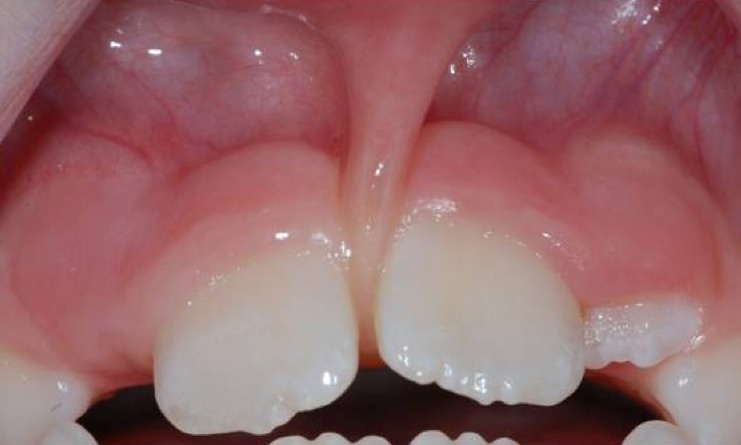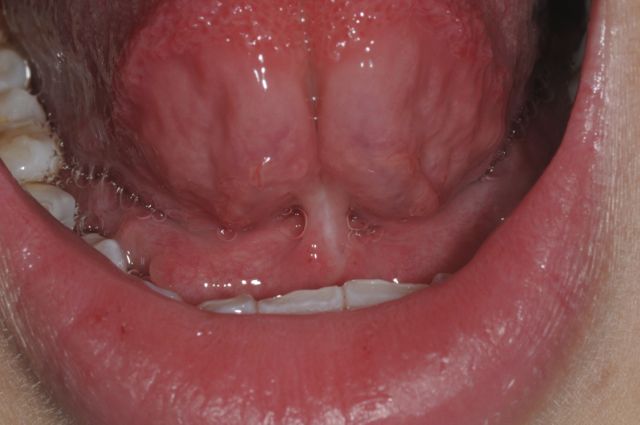A frenectomy (also known as a frenulectomy, frenulotomy or frenotomy) is the removal of a frenulum, a small fold of or tissue / muscle fibers that develop in different part of the mouth. Done mostly for orthodontic purposes, a frenectomy is either performed inside the middle of upper lip, which is called labial frenectomy, or under the tongue, called lingual frenectomy.
Labial frenectomy:
Labial frenectomy refers to removal of muscle fibers / tissue in the middle of upper lip which extents to the gum tissue between central incisors. These muscle fibers and the force they exert during function can cause the upper incisors to shift and separate (i.e. Diastema). Your orthdontist may request an oral surgeon to remove the labial frenum to help minimize such shift.

Lingual frenectomy:
Lingual frenectomy refers to removal of muscle fibers / tissue the occurs in the floor of the mouth extending to or near the tip of the tongue on one side and to the gum tissue behind the lower central incisors in the other. This can limit range of tongue movement and compromise a child’s eating ability and phonetics. This is referred to as ankyloglossia or tongue tie. It can also cause recession of the gum tissue behind the lower incisors. Lingual frenectomy procedure allows removal of this band of muscle fibers and improve tongue movement.

Ankyloglossia (Tongue-Tie) in New Borns:
Tongue-tie (ankyloglossia) is may present at birth restricting the tongue’s range of motion. A tight band of tissue (lingual frenulum) tethers the bottom of the tongue’s tip to the floor of the mouth, so it may interfere with breast-feeding.
Signs and symptoms of tongue-tie include:
- Difficulty lifting the tongue to the upper teeth
- Difficulty moving the tongue
- Inability to stick out the tongue
Treatment may be indicated if:
- Baby has signs of tongue-tie that cause problems, such as having trouble breast-feeding
- Speech is affected by tongue-tie
- There is interfere with eating or speaking
About the surgical procedure:
- The frenum is detached using either a laser or a sterile scissor
- No local anesthesia is required as the band of tissue has little or no innervation.
- Procedure takes as little as 5 minutes to complete with rapid recovery
About Frenectomy:
Frenectomy is a relatively minor oral surgery procedure that often takes no more than 10-15 minutes to complete. It can be performed with local anesthesia, although IV sedation or nitrous oxide sedation are often given for more patient comfort.